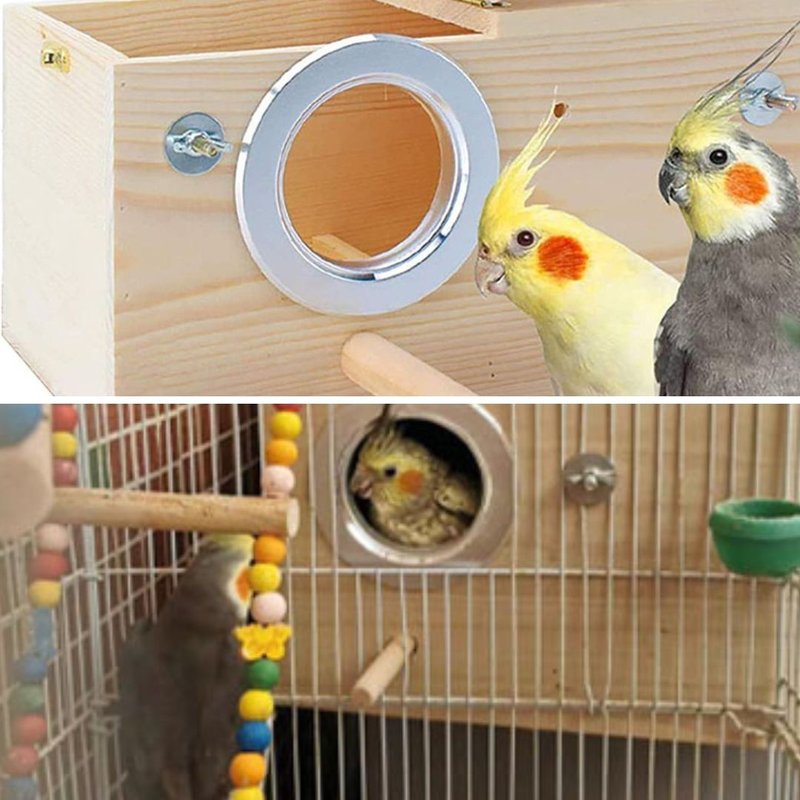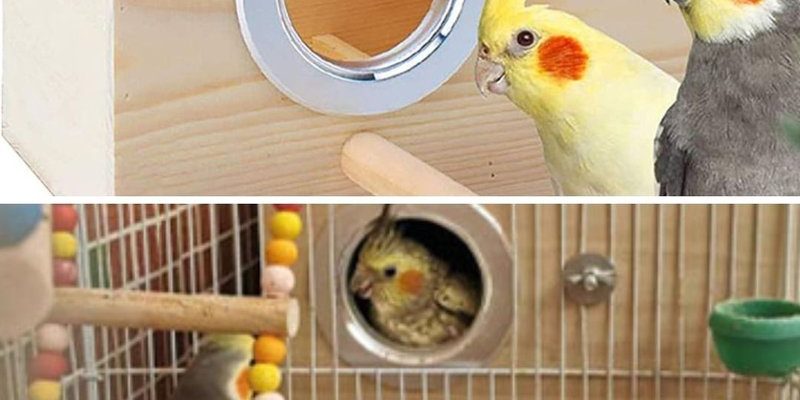
Here’s the thing: preparing for breeding takes a bit of know-how. You’ll want to get your supplies ready, understand their natural behaviors, and feel confident in your ability to provide a nurturing environment. Let’s dive deeper into the art of breeding cockatiels and explore how you can create the ideal setting for your feathered friends.
Setting Up the Perfect Nest Box
When it comes to breeding cockatiels, a nest box is a must-have. It’s where your birds will lay their eggs and raise their chicks. Ideally, the box should mimic a natural environment to make them feel safe and secure. Think about how birds nest in the wild: they choose cozy, enclosed spaces that protect them from predators and harsh weather.
Start by selecting a box made from solid wood or plywood, as it provides insulation and protection. The dimensions should be approximately 12 inches wide, 12 inches deep, and 18 inches high. Make sure it has a small entrance hole, about 3 inches in diameter, to keep larger birds out and allow ventilation. Position the box at a height where your cockatiels feel comfortable, usually around 3-4 feet off the ground.
You might want to include some nesting material as well. Materials such as shredded paper, hay, or soft grasses will make a cozy lining for the box. This not only helps in keeping the eggs warm but also gives the chicks a comfortable start in life.
Understanding Cockatiel Breeding Behavior
Before you jump into breeding, it’s essential to understand cockatiel behavior. These birds are generally social and enjoy pairing up. They often engage in courtship rituals that might include singing, whistling, and playful nipping. Familiarizing yourself with these behaviors will help you recognize when your cockatiels are ready to breed.
It’s also important to note that not all cockatiels will breed. Only healthy, mature birds typically engage in breeding activities. Cockatiels usually reach maturity at around 9 to 12 months, but sometimes it can take longer. Keep an eye out for signs of readiness, like increased affection and preening between the pair.
You might be wondering about the best time for breeding. Cockatiels typically breed during the spring and summer months when the daylight is longer. This natural rhythm encourages them to mate, so consider the seasons when preparing your breeding plan.
The Incubation Process
Once the female cockatiel lays her eggs (usually 3-7 eggs), you’ll need to focus on the incubation period. Cockatiels typically take about 18 to 21 days to incubate their eggs. During this time, it’s crucial to leave them undisturbed as the parents will take turns sitting on the eggs to keep them warm.
Here’s the thing: while it’s tempting to want to check on everything constantly, excessive handling can stress out the parents. Instead, observe from a distance and ensure they have everything they need. Proper diet and hydration are crucial during this time; they should have access to a balanced diet rich in seeds, fresh fruits, and vegetables.
If, for any reason, the parents abandon their eggs, you might consider using an incubator. A good incubator retains heat and humidity, mimicking the natural conditions that the parents would provide. Set the temperature around 99-100°F and maintain humidity levels at about 30-35% for optimal results.
Caring for the Chicks
Once the chicks hatch, the real fun begins! Newly hatched cockatiel chicks are adorable little fluff balls that are totally dependent on their parents. They can’t regulate their body temperature initially, so it’s vital to ensure that the parents can properly care for them.
The parents will feed their chicks a special secretion called “pigeon milk,” which is rich in nutrients. You might not need to intervene, but keep an eye on everything. If the parents are overwhelmed or unable to feed the chicks, you can step in. There are special formulas available designed for hand-feeding baby birds, but it requires careful attention — you don’t want to overfeed or feed them too quickly.
In the first couple of weeks, you should see significant growth. The chicks will grow feathers and start becoming more active. By around three to four weeks, they might begin to fledge, meaning they’ll take their first short flights. At this stage, you can begin to introduce them to soft foods like moistened seeds or pellets.
Preparing for Weaning
Weaning is an important transition for cockatiel chicks. It usually happens around 6 to 8 weeks old, but every bird is different. During this phase, they start to eat solids instead of relying solely on their parents’ feeding.
You can help by providing a variety of foods. Offer seeds, grains, fruits, and vegetables, and make them easily accessible. Watching them explore new foods can be delightful — it’s like seeing little kids discover their favorite snacks!
As they grow more independent, spend some time handling them gently. This interaction helps them get used to human presence, making the transition easier when they leave the nest. Remember, patience is key. If they seem hesitant at first, give them space but still engage with them every day.
Common Challenges in Breeding Cockatiels
Just like any pet-keeping experience, breeding cockatiels comes with its challenges. One common concern is egg binding, where the female struggles to lay eggs. This can be quite serious. If you see her straining without laying for an extended time, seek veterinary assistance as soon as possible.
Another issue is parental neglect, where one or both parents may neglect the chicks, especially if they feel stressed. Ensure their environment is calm and that they have ample food and water. If you suspect something is wrong, don’t hesitate to take action to either assist the parents or raise the chicks yourself.
You might also face difficulty in finding suitable homes for the chicks once they’re weaned. Make sure you’re prepared for this aspect of breeding — reach out to friends, family, or local parrot clubs to ensure a good match for your feathered babies.
Breeding cockatiels can be a truly fulfilling experience, allowing you to witness the beauty of life right from your home. You’ll learn a lot along the way — from setting up the perfect nest box and understanding breeding behaviors to caring for new chicks and overcoming challenges.
Just remember, patience and care are key. With the right setup and support, you can help these charming birds raise their families in safety and comfort. Whether you’re in it for the joy of watching them grow or to share them with friends, there’s a world of joy in breeding cockatiels. Enjoy the journey!

